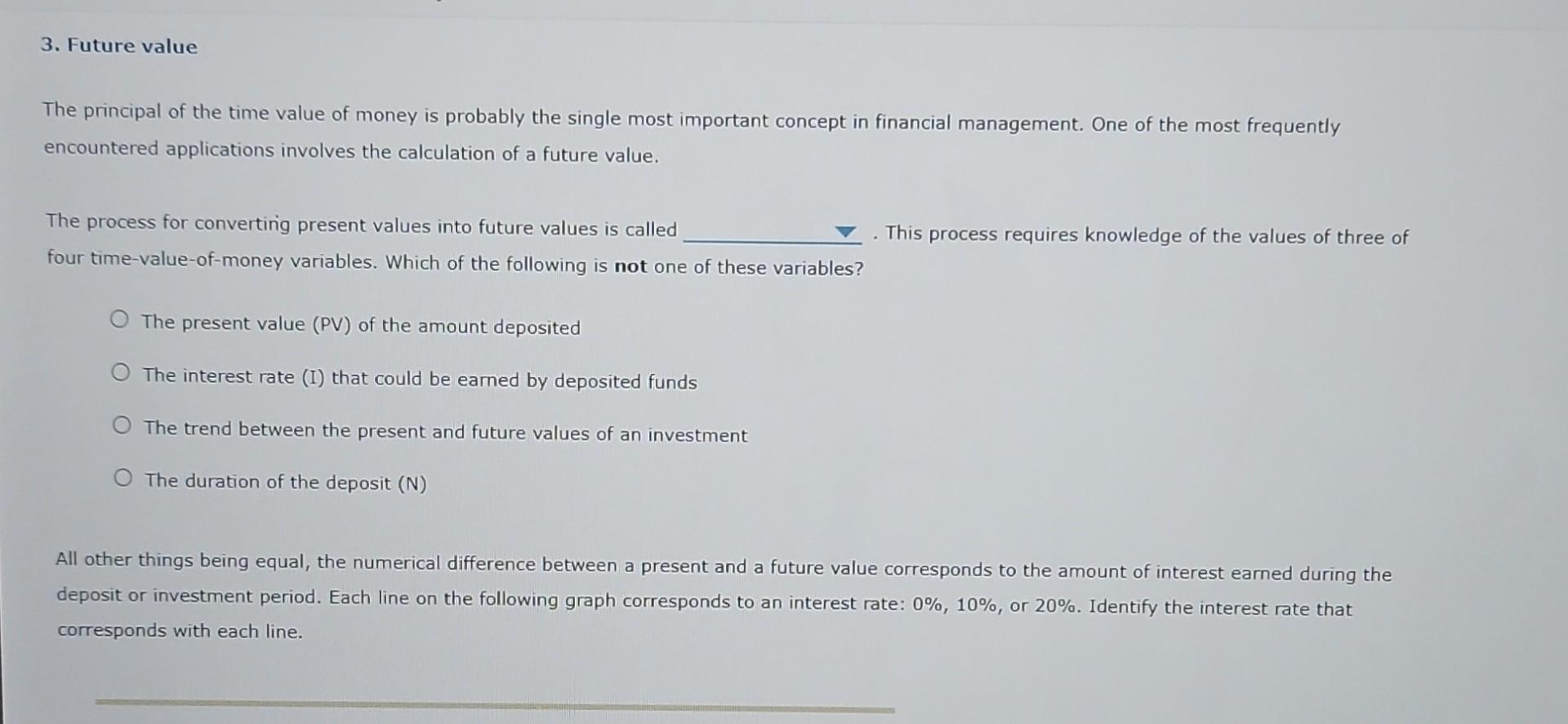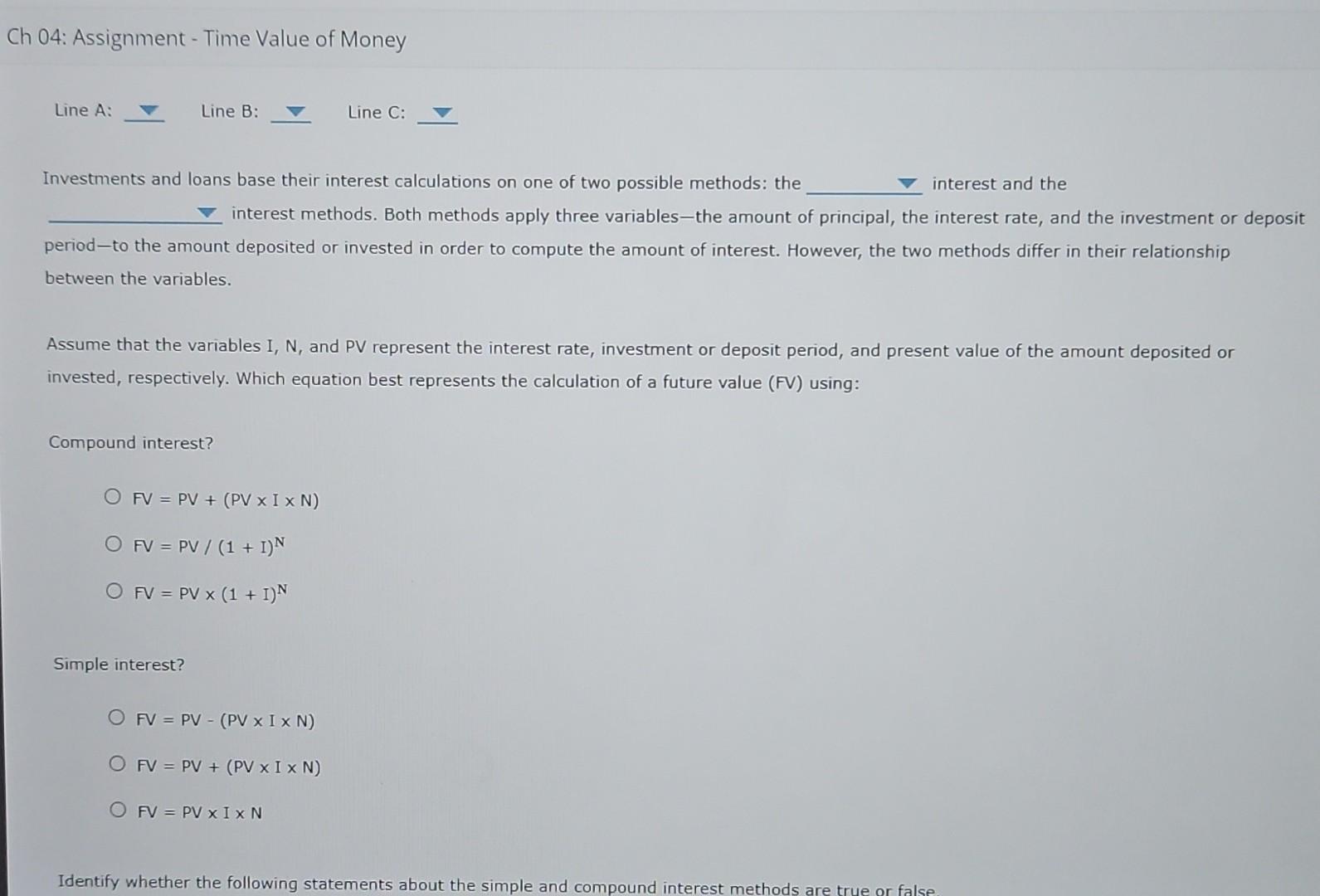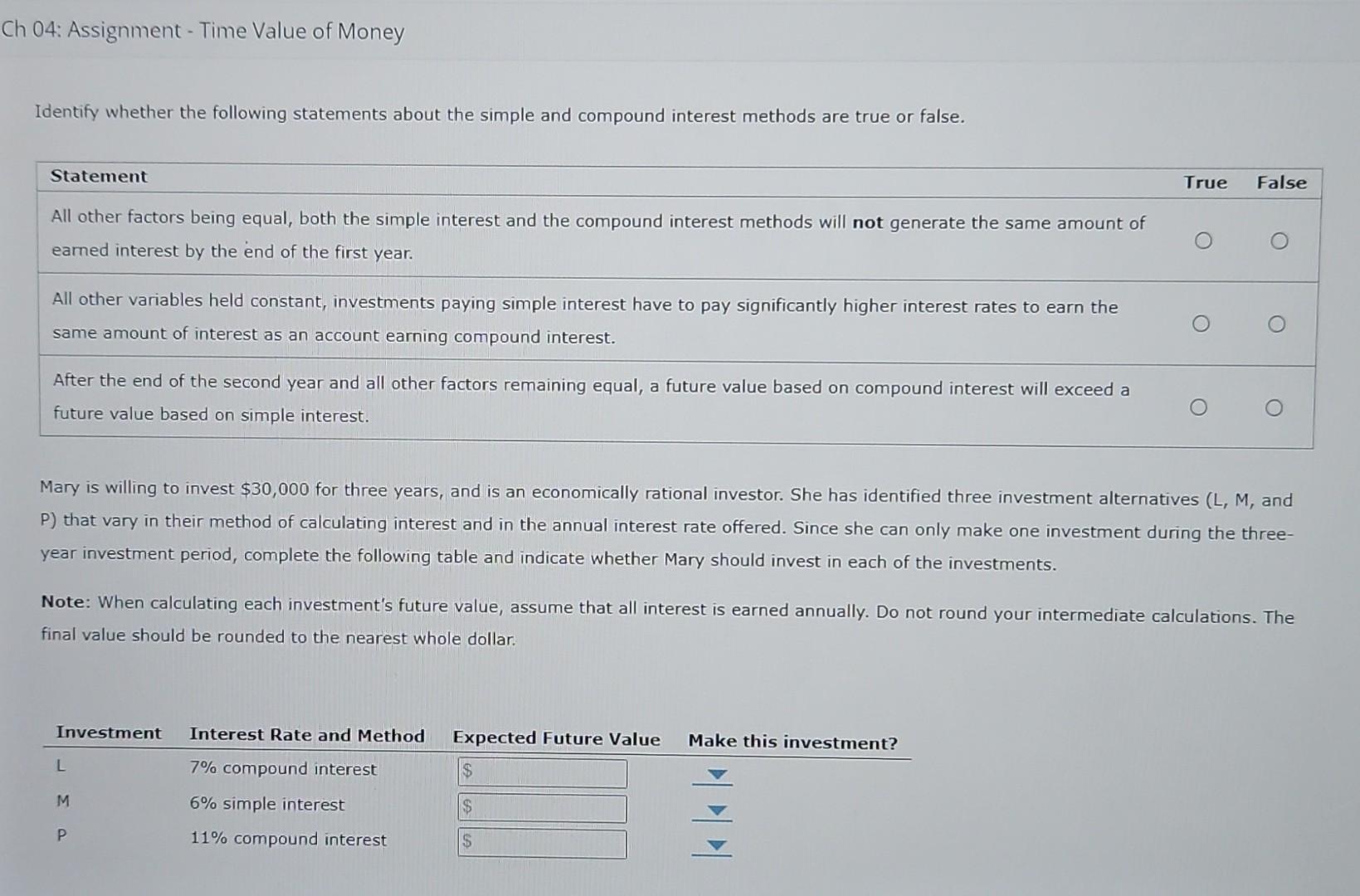Answered step by step
Verified Expert Solution
Question
1 Approved Answer
Please help I don't need help with this any longer. Ch 04: Assignment - Time Value of Money The principal of the time value of




Please help
I don't need help with this any longer.
Ch 04: Assignment - Time Value of Money The principal of the time value of money is probably the single most important concept in financial management. One of the most frequently encountered applications involves the calculation of a future value. The process for converting present values into future values is called . This process requires knowledge of the values of three of four time-value-of-money variables. Which of the following is not one of these variables? The present value (PV) of the amount deposited The interest rate (I) that could be earned by deposited funds The trend between the present and future values of an investment The duration of the deposit (N) All other things being equal, the numerical difference between a present and a future value corresponds to the amount of interest earned during the deposit or investment period. Each line on the following graph corresponds to an interest rate: 0%,10%, or 20%. Identify the interest rate that corresponds with each line. Investments and loans base their interest calculations on one of two possible methods: the interest and the interest methods. Both methods apply three variables-the amount of principal, the interest rate, and the investment or deposit period-to the amount deposited or invested in order to compute the amount of interest. However, the two methods differ in their relationship between the variables. Assume that the variables I, N, and PV represent the interest rate, investment or deposit period, and present value of the amount deposited or invested, respectively. Which equation best represents the calculation of a future value (FV) using: Compound interest? FV=PV+(PVIN)FV=PV/(1+I)NFV=PV(1+I)N Simple interest? FV=PV(PVIN)FV=PV+(PVIN)FV=PVIN Ch 04: Assignment - Time Value of Money Identify whether the following statements about the simple and compound interest methods are true or false. Statement All other factors being equal, both the simple interest and the compound interest methods will not generate the same amount of earned interest by the end of the first year. All other variables held constant, investments paying simple interest have to pay significantly higher interest rates to earn the same amount of interest as an account earning compound interest. After the end of the second year and all other factors remaining equal, a future value based on compound interest will exceed a future value based on simple interest. Mary is willing to invest $30,000 for three years, and is an economically rational investor. She has identified three investment alternatives ( L, M, and P) that vary in their method of calculating interest and in the annual interest rate offered. Since she can only make one investment during the threeyear investment period, complete the following table and indicate whether Mary should invest in each of the investments. Note: When calculating each investment's future value, assume that all interest is earned annually. Do not round your intermediate calculations. The final value should be rounded to the nearest whole dollar. Ch 04: Assignment - Time Value of Money The principal of the time value of money is probably the single most important concept in financial management. One of the most frequently encountered applications involves the calculation of a future value. The process for converting present values into future values is called . This process requires knowledge of the values of three of four time-value-of-money variables. Which of the following is not one of these variables? The present value (PV) of the amount deposited The interest rate (I) that could be earned by deposited funds The trend between the present and future values of an investment The duration of the deposit (N) All other things being equal, the numerical difference between a present and a future value corresponds to the amount of interest earned during the deposit or investment period. Each line on the following graph corresponds to an interest rate: 0%,10%, or 20%. Identify the interest rate that corresponds with each line. Investments and loans base their interest calculations on one of two possible methods: the interest and the interest methods. Both methods apply three variables-the amount of principal, the interest rate, and the investment or deposit period-to the amount deposited or invested in order to compute the amount of interest. However, the two methods differ in their relationship between the variables. Assume that the variables I, N, and PV represent the interest rate, investment or deposit period, and present value of the amount deposited or invested, respectively. Which equation best represents the calculation of a future value (FV) using: Compound interest? FV=PV+(PVIN)FV=PV/(1+I)NFV=PV(1+I)N Simple interest? FV=PV(PVIN)FV=PV+(PVIN)FV=PVIN Ch 04: Assignment - Time Value of Money Identify whether the following statements about the simple and compound interest methods are true or false. Statement All other factors being equal, both the simple interest and the compound interest methods will not generate the same amount of earned interest by the end of the first year. All other variables held constant, investments paying simple interest have to pay significantly higher interest rates to earn the same amount of interest as an account earning compound interest. After the end of the second year and all other factors remaining equal, a future value based on compound interest will exceed a future value based on simple interest. Mary is willing to invest $30,000 for three years, and is an economically rational investor. She has identified three investment alternatives ( L, M, and P) that vary in their method of calculating interest and in the annual interest rate offered. Since she can only make one investment during the threeyear investment period, complete the following table and indicate whether Mary should invest in each of the investments. Note: When calculating each investment's future value, assume that all interest is earned annually. Do not round your intermediate calculations. The final value should be rounded to the nearest whole dollarStep by Step Solution
There are 3 Steps involved in it
Step: 1

Get Instant Access to Expert-Tailored Solutions
See step-by-step solutions with expert insights and AI powered tools for academic success
Step: 2

Step: 3

Ace Your Homework with AI
Get the answers you need in no time with our AI-driven, step-by-step assistance
Get Started


